Pilot Custom Heritage 92 Fountain Pen Review

Another step down the slippery slope of fountain pens. This time, I am reviewing the Pilot Custom Heritage 92, the only Pilot fountain pen with a piston mechanism. At the time, I had planned to actually get the Custom 74, and fulfill the trio of the Japanese Big 3: the 1911S, Custom 74, and Platinum 3776 Century, all of which is kind of the first gold nib pen and as their “entry-level” to their “flagship” pens.
I had initially thought I would be a huge Pilot fan, over any other brand, though I am a fan of them still, the Sailor and Platinum counterparts are very appealing too!
Pilot was founded in 1918 as the Namiki Manufacturing Company, and was renamed to Pilot Pen Company in 1938. However, the Namiki company still exists (perhaps under Pilot) as their top-tier brand, making urushi and maki-e pens. Pilot is the largest pen company in Japan, and probably best known for their popular Pilot G2 rollerball pens, outside of the fountain pen community. I would dare to say that Pilot has the largest, more ‘innovative’ selection of writing utensils; with ballpoints, rollerballs, gel pens, erasable ink pens and pressurized pens. In their fountain pens, they have cartridge/converter, a piston filler, a vacuum filler, and pocket pens. Their nibs go from extra-fine (Pilot Penmanship), to double broad (78G), retractable nibs (Vanishing Point), calligraphy nibs (Parallels, Plumix italic), adjustable nib (Justus 95), and in their gold nibs (mostly available only in Japan): soft fine, soft medium, course, stub, posting (extra-fine), waverly (slightly bent for smoothness), falcon, and music (3 tine stub). Needless to say, you could find almost anything you wanted in a Pilot pen. Almost. A lot of models have the same nib sizing, but not all, and not all models are obtainable via North American distributors. For the Custom Heritage 92, that means only the clear body in fine and medium. So I purchased this pen from Japan, and got it at a great deal of $76 dollars before shipping, as opposed to the usual ~$100 USD from Japan, or $130 from JetPens, or $220 from Goulet. Yes, I got it for almost 1/3rd of the retail price in the US, but I unfortunately did not get the colour I would have preferred, in my opinion. The CH92 comes in clear, smoke and “Asa-Gao” (Morning Glory) blue, a colour in the Pilot Iroshizuku ink line.
Unboxing

Again, this is the Japanese packaging I was given, so the US version may look a little different. The pen comes in a grey coloured box, with gold lettering. The Pilot logo and “PILOT” is printed on the center, in an embossed square.

Inside the box, is the black plastic case, again with a square and the gold Pilot logo. The lid opens and closes loosely, with a little plastic hook to snap it shut. It’s not a particularly fancy box, all things considered.
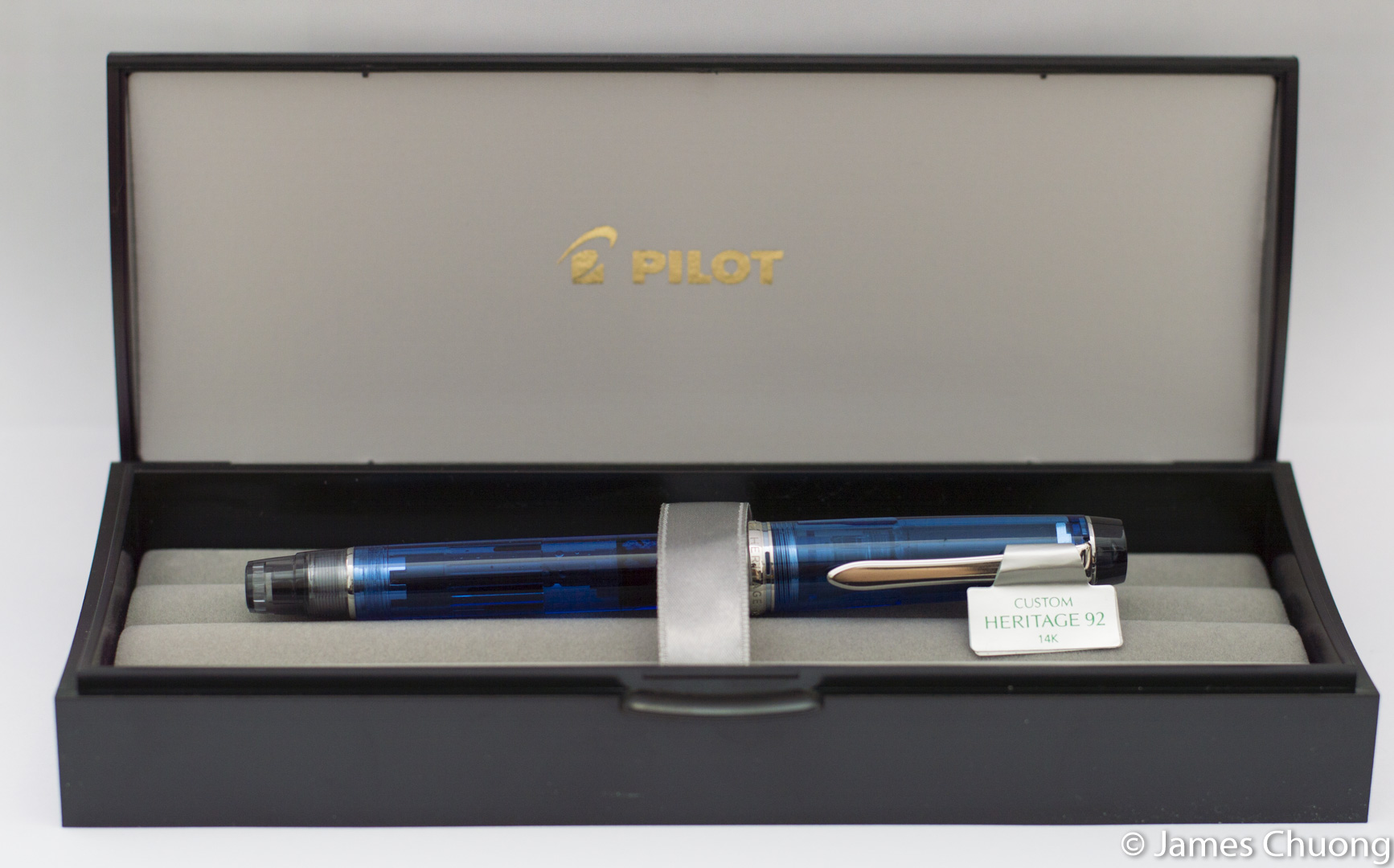
Opening up the case, again there is silver grey coloured fabric and the gold Pilot logo on the lid. The pen lays in the pen case, maybe wrapped in a plastic sleeve (not shown), and a tab that says “Custom Heritage 92 14K”. On the pen is a sticker, with the size of the nib on it: “M 中字”.
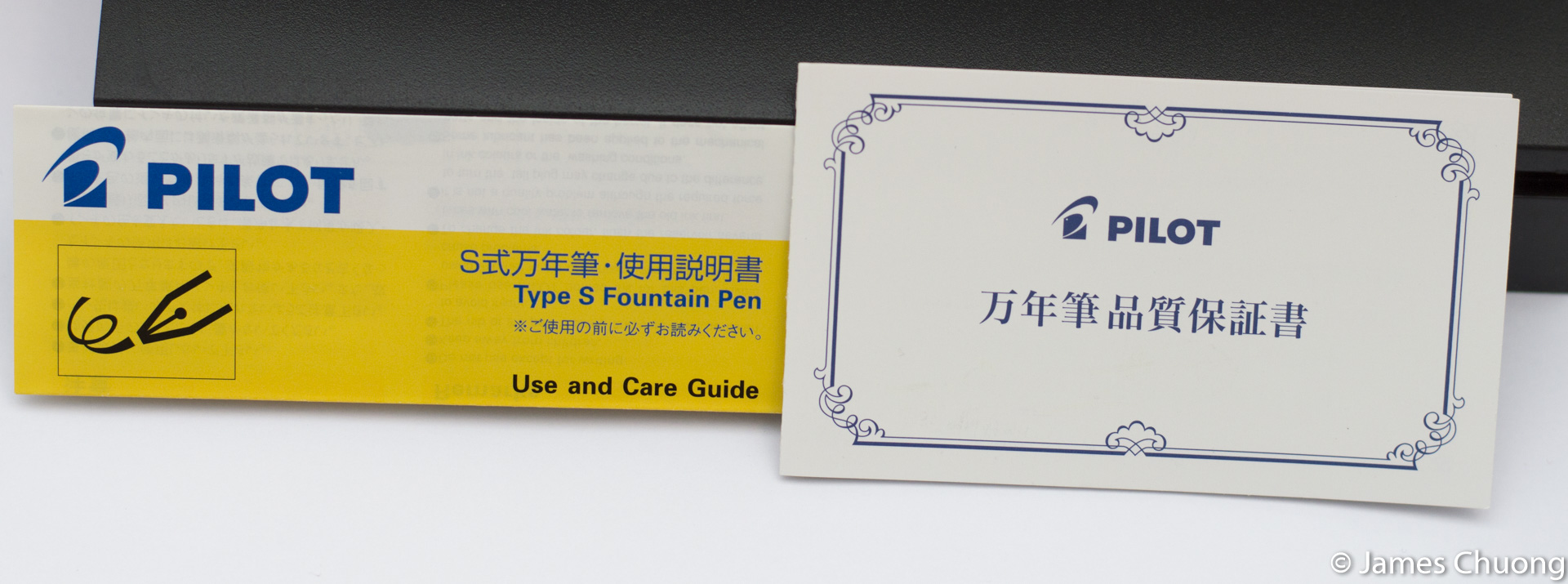
Along side the pen, there is the warranty card (in Japanese) and a use and care guide in both Japanese and English.
Features
The Custom Heritage 92 is Pilot’s only piston filled pen, that features about a 1.2mL capacity. I believe the Custom Heritage line features the modern design of flat ends, and rhodium trim. The Custom Heritage 92 features a 14K rhodium plated gold nib, in the Pilot #5 size (same as Stargazer, Custom 74, Custom Heritage 91).
The Custom Heritage 92 are all demonstrator fountain pens, in either clear, smoke grey and blue resin. The cap is a twist-cap, taking 1.5 rotations to uncap and pushes to post quite deeply. Along with the modern look, the Custom Heritage line also has a simple “sword” clip.

In terms of size, it is fairly small, smaller than the TWSBI 580 which would be the easiest comparison as they are both piston fillers. Furthermore, it is also lighter than the 580 at 20g capped, and 12g uncapped.

In comparison to the Sailor 1911S and Platinum 3776 Century, it is in the middle in size capped, and uncapped it is the longest of the three.

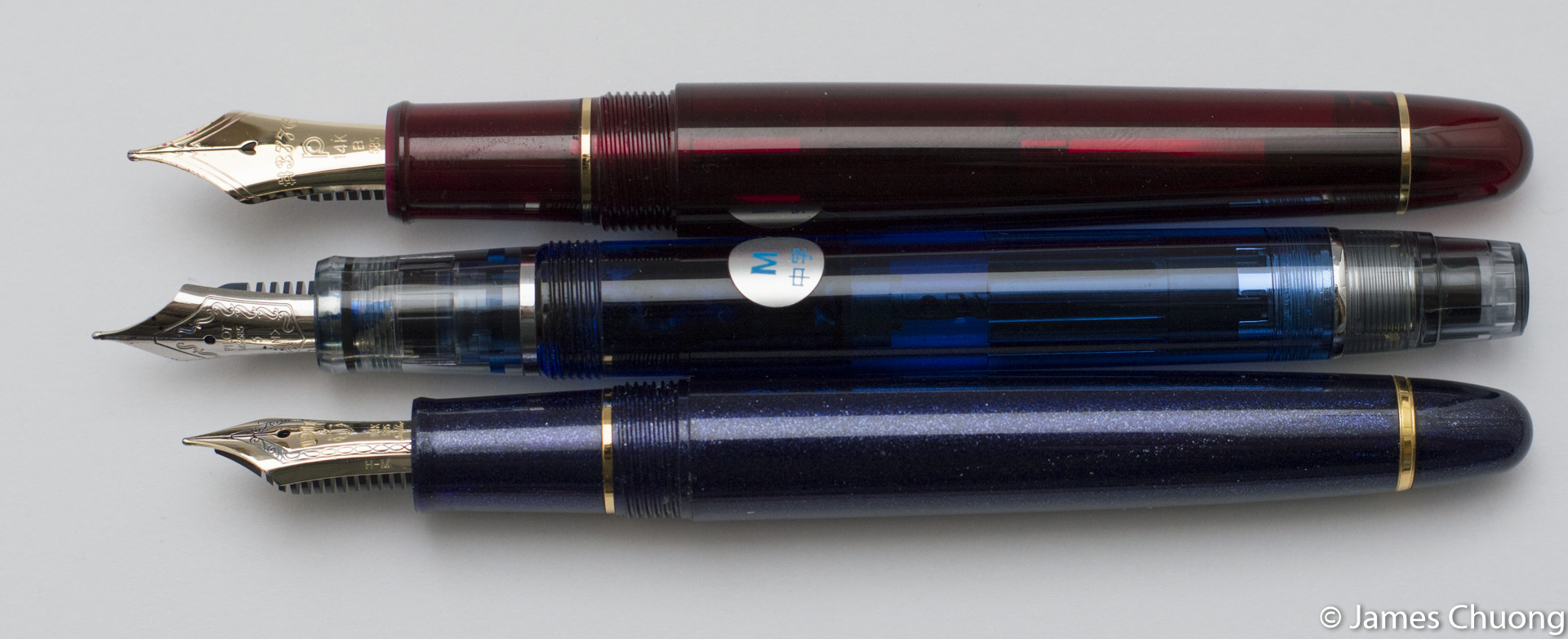

Looks

The Custom Heritage 92 is a fairly attractive pen with the modern design. The three colours of the CH92 go well with the silver trim, but I think it lacks a little bit of impact.
The finial of the cap is just a smoke black coloured flat end without any logos. Inside the cap, there is a smoke grey inner cap that partially obscures the nib when capped.
On the cap band, the band has some cut outs for some reason, and has the words “CUSTOM HERITAGE 92 PILOT JAPAN” engraved.
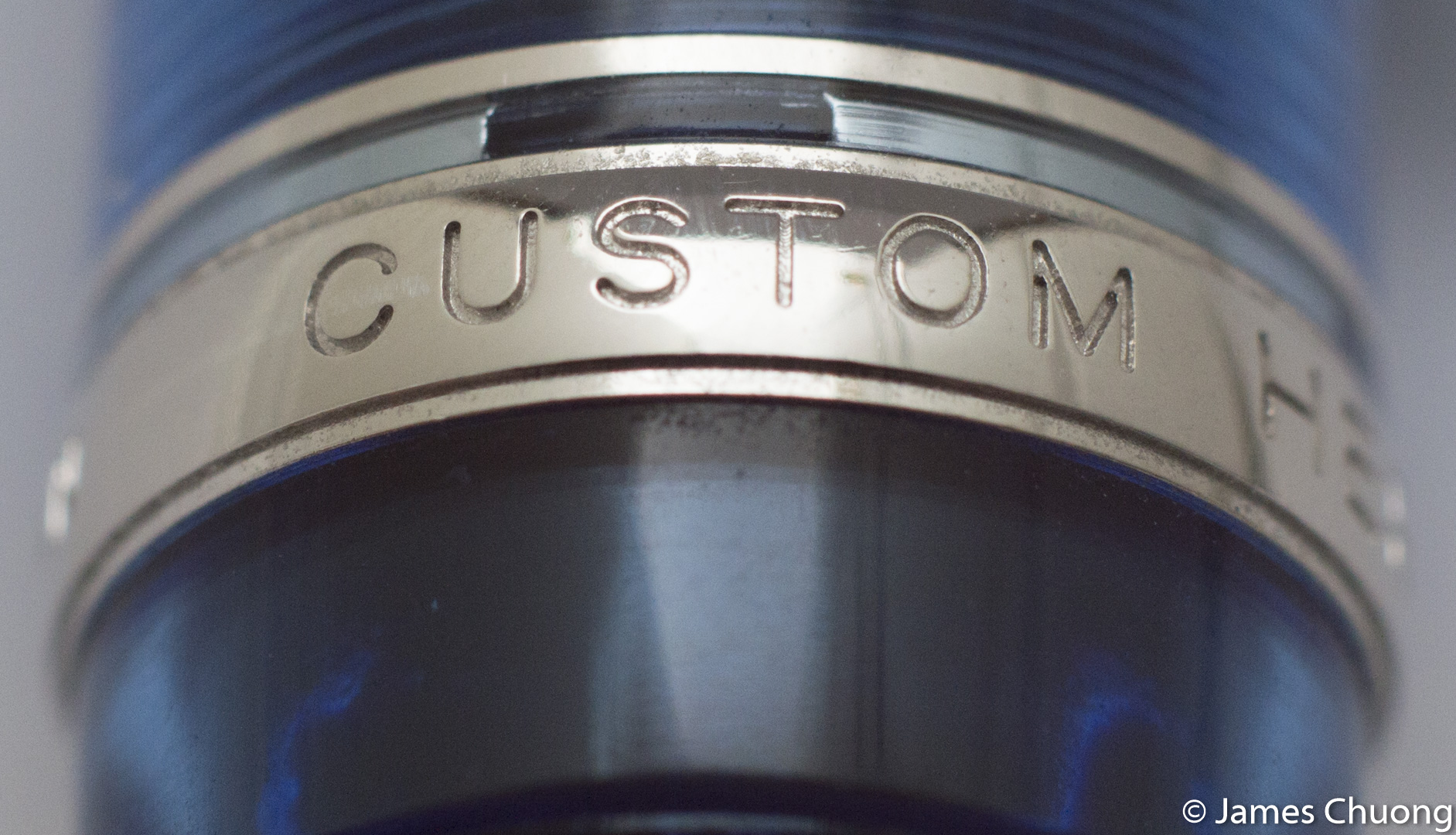
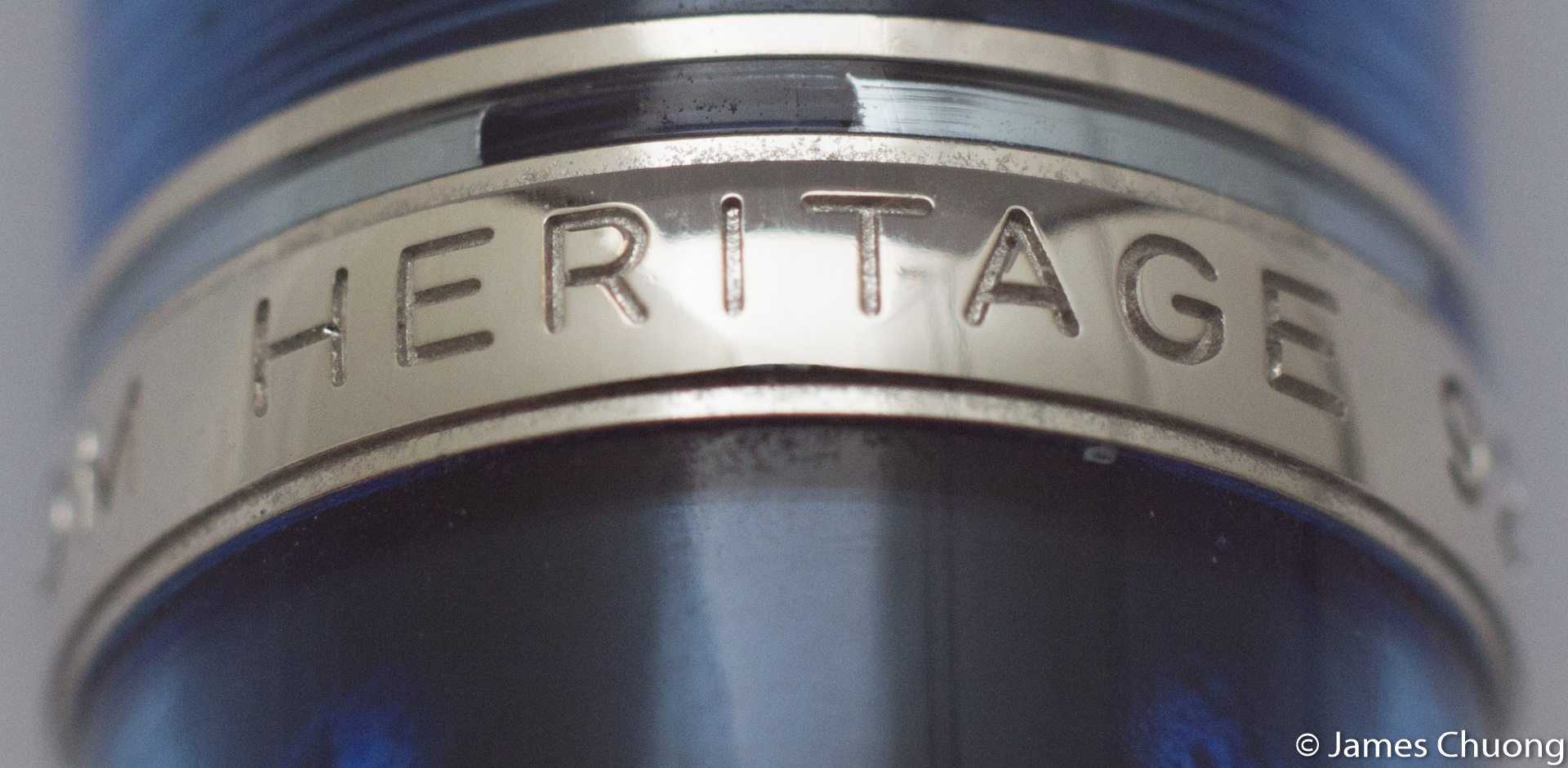
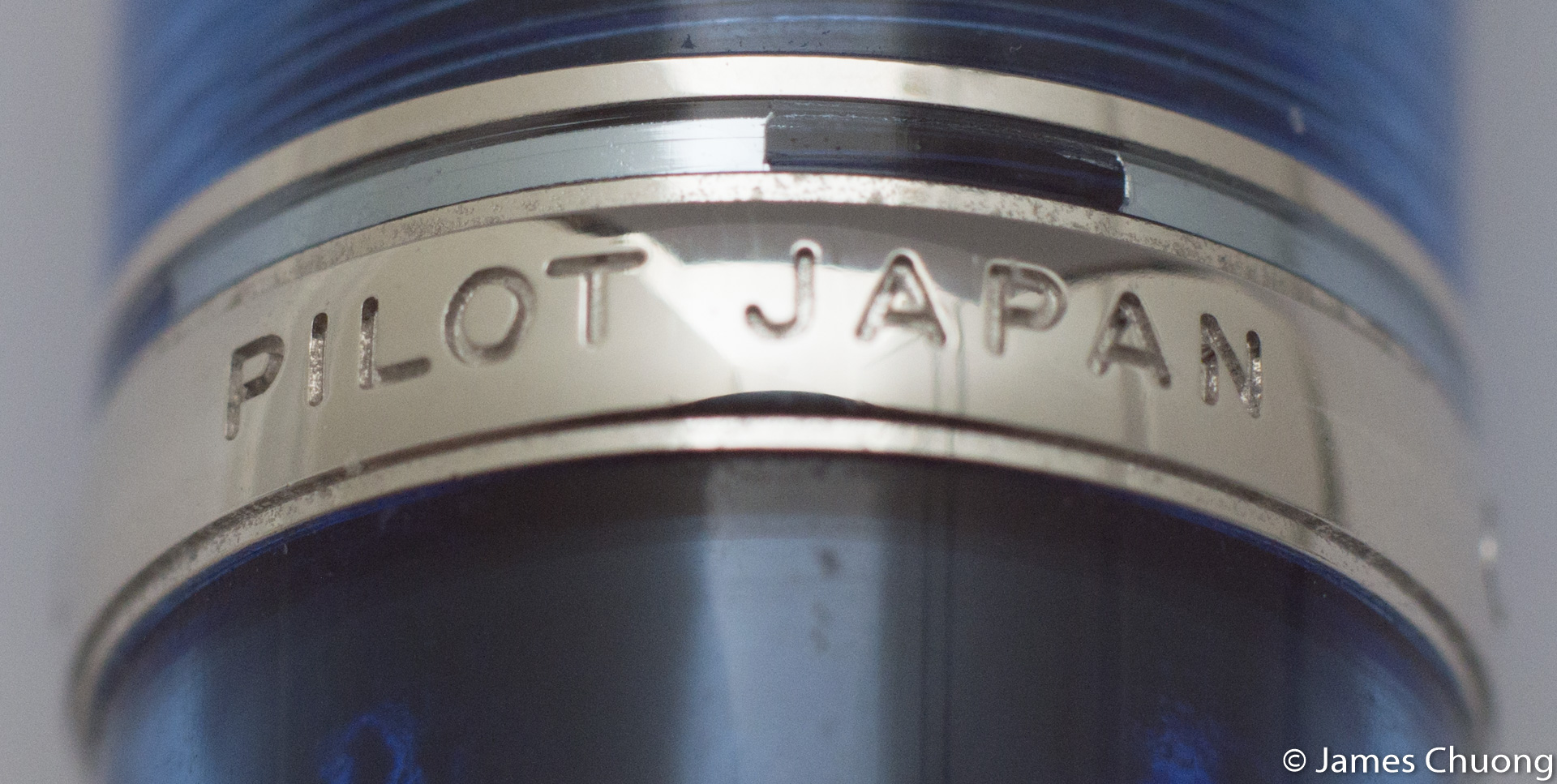
The body is straight, and ends with the smoke piston nob with a slight taper. The section is also a smoke grey color, connected with a silver band to the body, and has shallow plastic threads for the cap.
The nib is a fairly ornate with scrollwork around the edges. The nib is stamped with the words “PILOT”, “14K-585” (the gold content), “5” (#5 size nib), “

Now, I’m not the biggest fan of the translucent blue colour. It isn’t my first choice, in fact I’d prefer the clear or smoke coloured resin over the blue any day. I think that it doesn’t help that there are smoke parts on the pen, which doesn’t match with the blue body (though perfect with clear or smoke bodies).
Writing Experience
The Custom Heritage 92 writing experience is quite complicated to describe. Of the three Japanese pens, I think that Pilot CH92, Platinum 3776 Century and Sailor 1911S as the least amount of feedback to most feedback in that order. If you like less feedback, then Pilot is the brand to go with. In terms of springiness, I found that 1911, CH92 and 3776 has the least spring to the most. Some people argue that the Custom 74/92 has more spring but I found the opposite. The smaller nib doesn’t have a whole lot of spring (I’m not willing to push too far either) compared to the much larger 3776 nib.
In terms of smoothness, the CH92 was very smooth in all conditions – because I think it has baby’s bottom. I had slightly misaligned the tines and it was still smooth. The ink flow wasn’t as good when misaligned but I couldn’t really tell that it was misaligned. In fact, it was an obvious baby’s bottom if you were to write with it vertically. Now, most people do not write in English with a vertical grip, but some Asian users writing characters like this (emulating a brush) may find this more bothersome.
However, this possible baby’s bottom actually has never occurred to me under normal use, on cheaper paper, Rhodia nor Tomoe River paper. However, there is a second “issue” with the nib, it is a little too tight on at the tip. Normally, a nib has a slit that is widest at the breather hole, and closest at the tip, which the CH92 has. However, the nib is a little too close together, tighter than the Metropolitan nib for example, which leads to dry upstrokes. This makes some lines a little thinner, or drier than the down strokes (look at some l’s). For the most part, it isn’t a big deal at all. It wasn’t until I actually scrutinized it that I realized this was the case. The extra dryness didn’t affect the feel of writing either, it was still smooth, just the upstrokes would be dry (more noticeable if you compared a downstroke with an upstroke, not in writing). In both English and Chinese/Japanese writing, there aren’t upstrokes that go vertically like | for it to matter. But it’s there. I may end up springing some money and having it tuned by a professional, as I tried and am not very confident on working on an expensive nib.
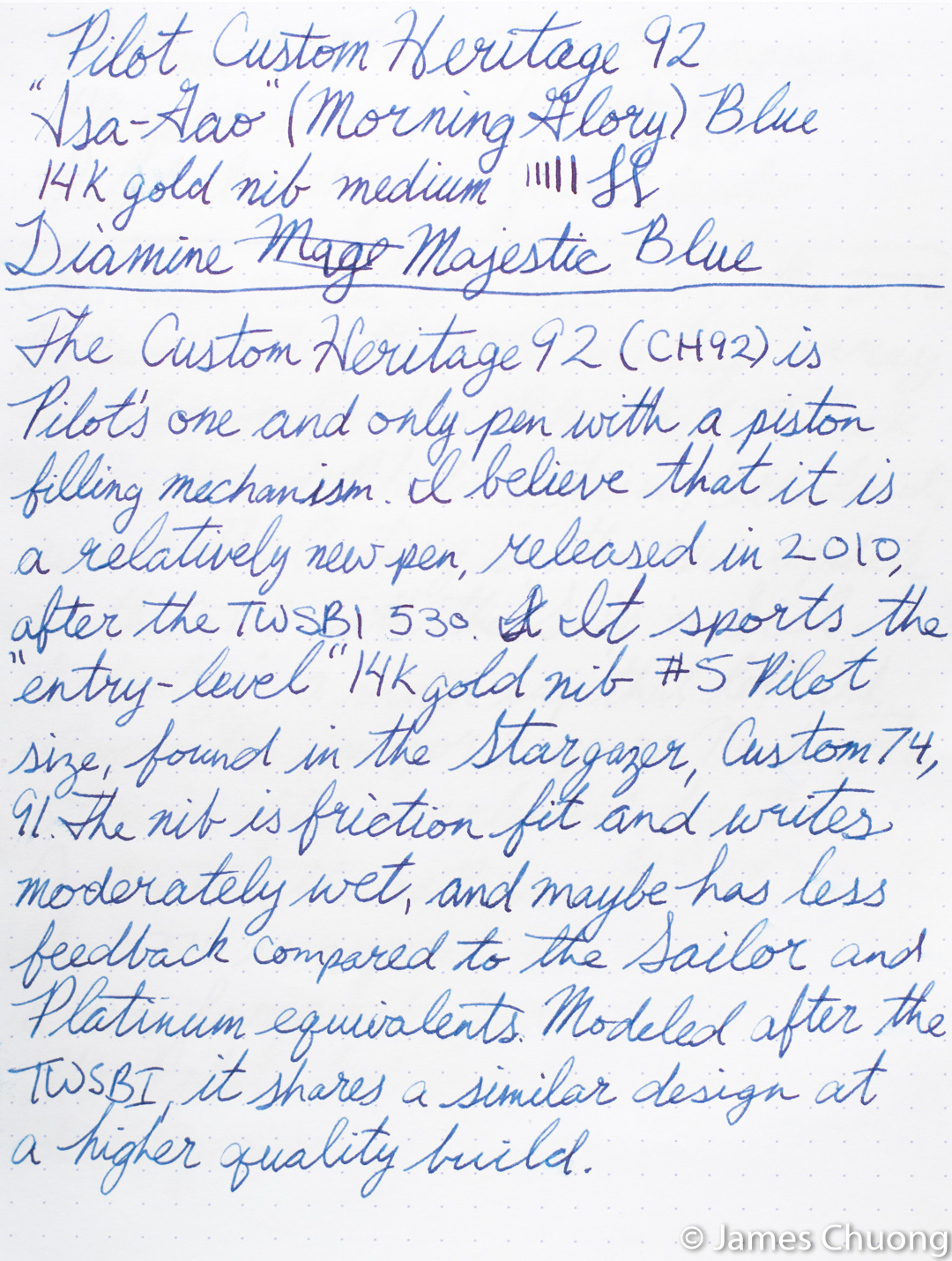

In terms of wetness, the Pilot Custom Heritage 92 is just moderately wet, maybe a bit on the dry side due to the issues above. However, on the down strokes the tines open a bit and become wetter for some shading and sheen.
Misc and Final Thoughts
Interestingly, the last section makes it look like I am dissatisfied with the way my Custom Heritage 92 writes. However, that isn’t the case. For my fairly standard grip and angle, writing was completely perfect, though a little on the dry side (again, upstrokes) so if you want a wet pen out of the box, this probably isn’t the pen for you.
However, the pen feels pretty good. The TWSBI Diamond 580 body with the facets feels a little thicker, possibly because of the facets, but the Custom Heritage 92 has the fairly study, yet lightweight, feel. The cap action feels smooth, and the piston is even smoother. In fact, the most common question is “what is this condensation behind the piston?” I believe that isn’t actually condensation, especially if it is in every CH92, and it’s actually excess lubrication to keep the piston in good condition.

One thing to note about the piston is that I have read it is able to be disassembled with a TWSBI wrench. I tried with my 580’s wrench and it doesn’t fit, but I have also seen the TWSBI Eco’s plastic wrench will fit. In any case, I should also mention that you should not remove the piston, as per the instructions from Pilot. You will void your warranty doing so… but I’m not under any real warranty. There’s no real reason to take out the piston for many many years.
There is a small ‘defect’ in design though, maybe because it is a demonstrator. Inside the section/nib collar, there are maybe two or three pieces fitting together. Thus, there is a small gap between those pieces, and by filling your pen, some ink can enter the small crevice, and doesn’t easily clean out. So as a demonstrator, you can be able to see the ink there. It doesn’t affect the ink, or writing performance but if you’re really sensitive to seeing nib creep, this is probably going to make you sad.
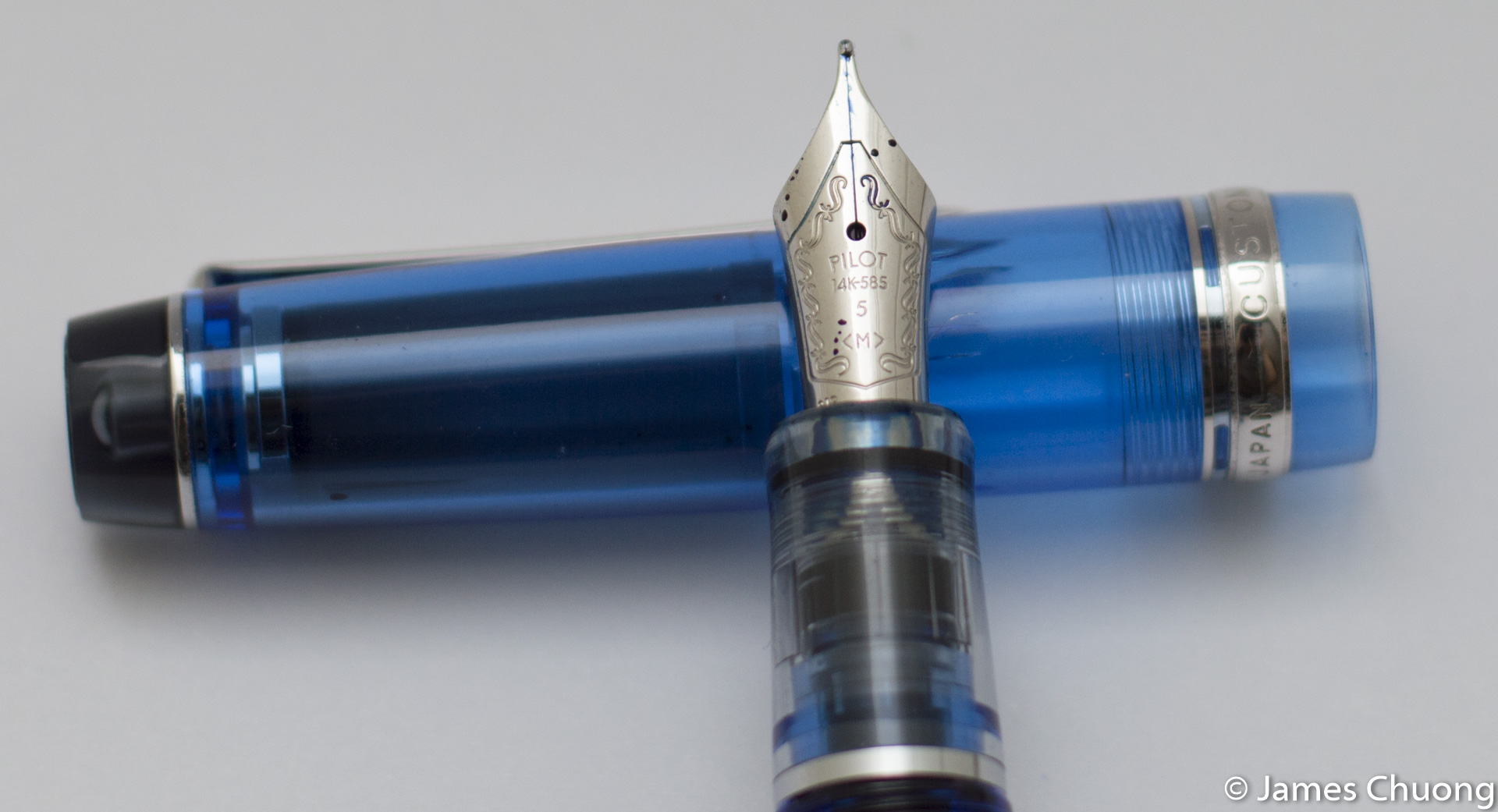
The nib is friction fit, so if you’re adventurous you can take the nib out and swap it out with another Pilot pen from Japan. Pilot only puts the interesting nibs on the black opaque pens, so Custom 74 in black and Custom Heritage 91 in black, so I’ve found.
Wrapping up, I think the Custom Heritage 92 is a good value pen, especially if you get it at $130 from JetPens. At my $76 + shipping, this was a steal. A piston filler with a gold nib, there isn’t many pens that can compare.
I listed a lot of things that may bother people. These are really minor issues. For most people, I think these minor issues can be accepted. Still, this is a premium fountain pen at an awesome price ($130~), maybe harder to justify at $220.